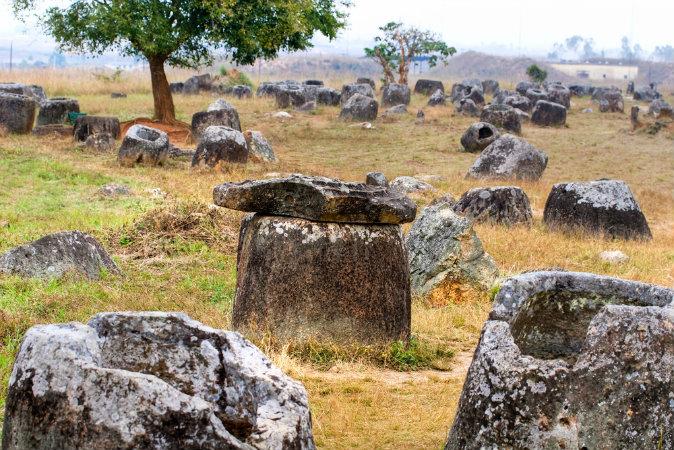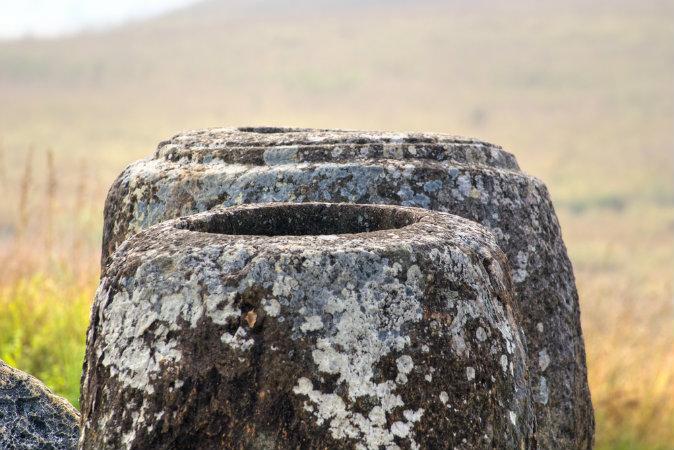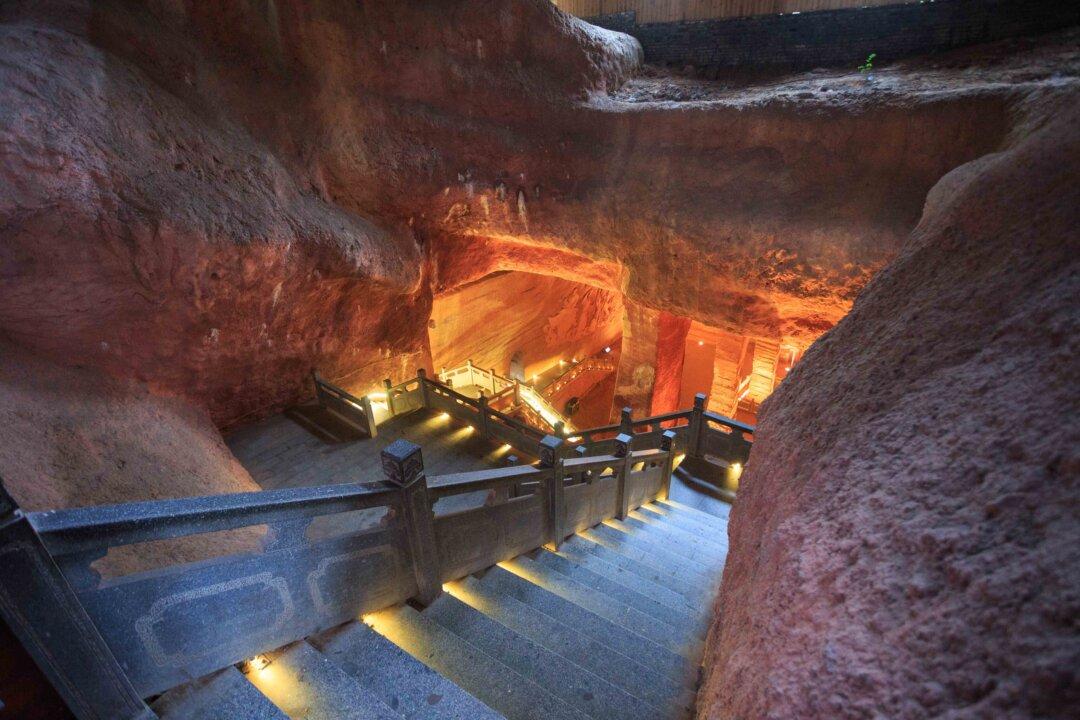The Plain of Jars in the Xieng Khouang plain of Laos is one of the most enigmatic sights on Earth. The unusual site of thousands of megalithic stone jars scattered across nearly one hundred sites deep in the mountains of northern Laos has fascinated archaeologists and scientists ever since their discovery in the 1930s.
The unusual site known as the Plain of Jars is dated to the Iron Age (500 BC to 500 AD) and is made up of at least 3,000 giant stone jars up to 3 metres tall and weighing several tonnes. Most are made of sandstone but there are others made of much harder granite and limestone.
Because the jars have lip rims, it is presumed that all of them were originally covered with lids and although a few stone lids have been recorded it is more likely that the main material used was wood or ratan.

Megalithic jars on the Xieng Khouang plain of Laos. (Shutterstock)
The jars appear to have been manufactured with a degree of knowledge of what materials and techniques were suitable. It is assumed that Plain of Jars’ people used iron chisels to manufacture them although no conclusive evidence for this exists. Little is known of the people who carved the huge containers and the jars themselves give little clue as to their origins or purpose.
According to local legend, the jars were created by a race of giants, whose king needed somewhere to store his rice wine. The wine was to be consumed at a great feast to celebrate an illustrious military victory thousands of years ago. Legend tells of an evil king, named Chao Angka, who oppressed his people so terribly that they appealed to a good king to the north, named Khun Jeuam, to liberate them. Khun Jeuam and his army came, and after waging a great battle on the plain, defeated Chao Angka.
While some have maintained that the giant jars were used to collect the monsoon rainwater, most archaeologists believe that the jars were used as funerary urns. Excavation by Lao and Japanese archaeologists in the intervening years has supported this interpretation with the discovery of human remains, burial goods and ceramics around the stone jars. It is believed that the jars were used to place the corpses of deceased people where they were left to decompose or ‘distill’, a practice that has been common in Thailand and Laos, usually in pits. It is believed that the bodies were left in the jars for the soft tissue to decompose and the body to dry out before being cremated. Once they had been cremated, the ashes would have been returned to the urns, or perhaps buried in a sacred place, freeing the jars for re-use to decompose another body.
Archaeologists still don’t have all the answers but unfortunately their work has been slowed down by the fact that the Plain of Jars is one of the most dangerous archaeological sites in the world. Scattered over the plains are literally thousands of tonnes of unexploded bombs, land mines and other unexploded military ordnance, which contaminate more than 35% of the province’s total land area and continue to threaten the lives of the 200,000 people who now live in Xieng Khouang.
Republished with permission from Ancient-Origins.net. Read the original.
*Image of megalithic jars via Shutterstock




